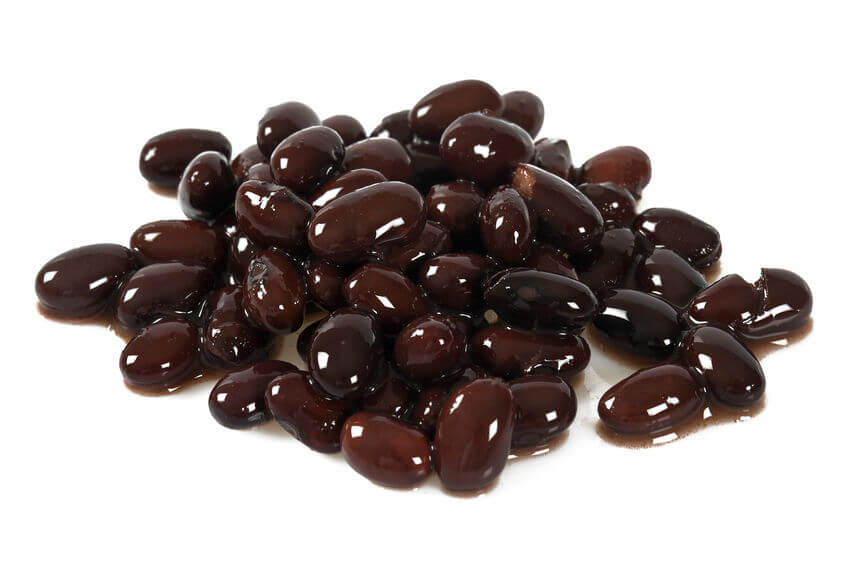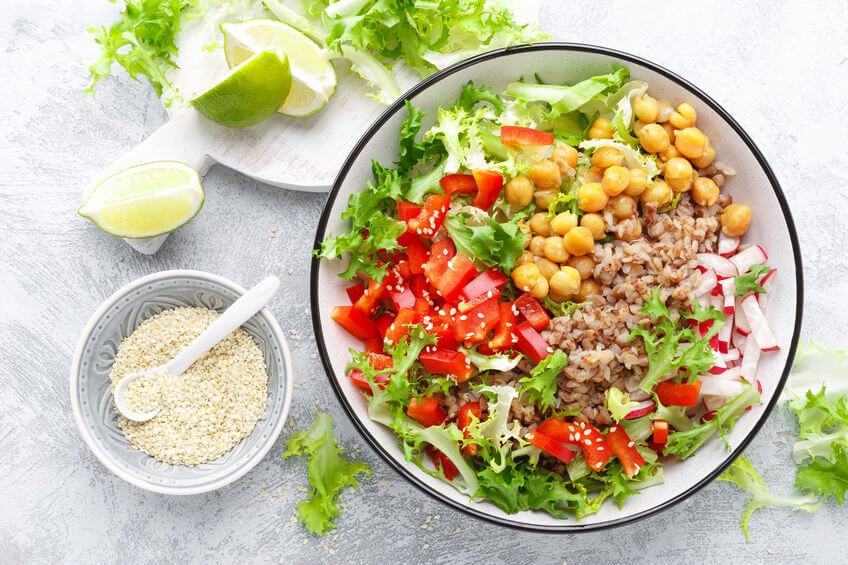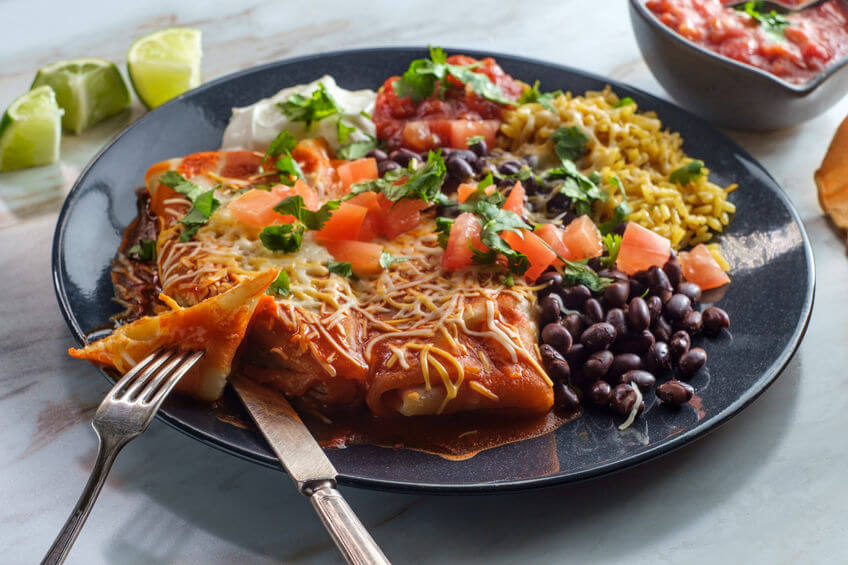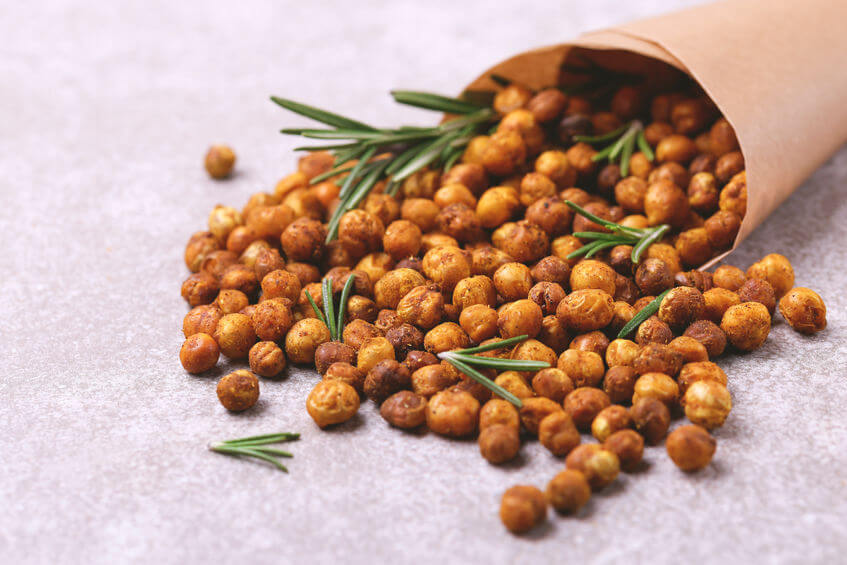While the human body has incredible capacity for healing, health is not something that should be taken for granted. The good news is that there are simple things that anyone can do to remain healthy and well, like eating a balanced, nutritious diet. One category of food that can be beneficial to add to your diet is legumes, and when it comes to legumes, there are plenty of types to explore, but two of the most popular forms are chickpeas and black beans. Although they are similar in many respects, there are some key differences that may sway you toward one or the other. In this post we’ll be exploring some of the differences between chickpeas vs black beans to help you decide which is best for you.
What Are Chickpeas?

Also known as garbanzo beans, these legumes are characterized by a rounded shape, mild and slightly nutty flavor, and beige color. If you’re only familiar with the canned variety, you might be surprised to learn that chickpeas also come in shades of red, yellow, green, and black.
Chickpeas are an excellent source of protein, fiber, and vitamins and minerals, which makes them a great addition to any healthy diet. They can aid in digestion and weight loss, contribute to better bone and heart health, and help to reduce blood pressure and cholesterol. They can even reduce risks for diseases like diabetes and cancer.
Of course, chickpeas also deliver incredible versatility. Whether you toss them in the food processor to make a creamy hummus or throw them into salads, soups, and stews for added texture, flavor, and satiety, you’ll find that chickpeas are easy to incorporate into nearly any meal. That said, the chickpeas vs black beans debate is far from decided.
What Are Black Beans?

Black beans, also known as turtle beans, are another type of legume, although they are very different from chickpeas. Their name comes from their shiny, black exterior. They are oblong in shape.
Like other legumes, black beans are an excellent source of protein and fiber, while also offering several vitamins and minerals that can help with digestion, weight loss, bone and heart health, and the prevention of certain diseases.
Black beans have a mild, but distinctive flavor and a creamy texture when cooked. Because of this, they are good to eat on their own, as a side dish, or mixed into a wide variety of recipes, ranging from savory chili to sweets like brownies.
You might be surprised by the vast number of ways that you can prepare these tasty legumes. But there’s more you need to know before you decide!
Chickpeas VS Black Beans
There’s a lot that factors into the decision to be made between chickpeas and black beans. Let’s explore some of their differences in more detail.
Nutrition
Let’s have a look at how the two stack up in terms of nutritional content:
| Item | Chickpeas | Black Beans |
| Calories | 267 | 228 |
| Protein | 14.4g | 15.2g |
| Fat | 4.2g | 0.9g |
| Carbs | 44.7g | 40.8g |
| Sugar | 7.8g | 0.6g |
| Fiber | 12.5g | 15g |
| Calcium | 80.4mg | 46mg |
| Iron | 4.7mg | 3.6g |
| Magnesium | 78.7mg | 120mg |
| Phosphorus | 274mg | 240mg |
| Potassium | 474mg | 610mg |
| Zinc | 2.5mg | 1.9mg |
| Selenium | 6.1mcg | – |
| Thiamin | – | 0.4mg |
| Niacin | – | 0.9mg |
| Vitamin K | – | 5.6mg |
As you can see, these legumes are relatively comparable in terms of the nutrients they offer, although black beans feature slightly more protein and fiber and less sugar. Because they are complex carbohydrates, chickpeas and black beans are both filling and slow to digest, which means they can help to make you feel full and keep you satisfied longer.

When paired with fiber for your digestive health, these legumes make for a great addition to a healthy diet for life. However, before you decide a winner in the battle of chickpeas vs black beans, you’ll want to consider preparation.
Preparation
While you’ve probably seen both chickpeas and black beans served cold in salads and other dishes, it’s important to understand that they have likely been cooked beforehand. Most canned beans, for example, are pre-cooked.
This is because they are incredibly difficult for your system to digest, thanks to the presence of complex sugars that can cause gastrointestinal discomfort that’s frequently associated with legumes. They also contain a protein called lectin that could cause toxic reactions, so you don’t want to eat them raw.
However, with proper preparation, you can minimize these issues. If you purchase dry beans, you’ll want to soak them for a considerable amount of time and drain the water prior to cooking.
The longer you soak them, the less you’ll need to cook them. If, for example, you soak your beans overnight for 6 to 10 hours, you can simmer them for 1-2 hours on the stove; a short soak will require a longer cooking time on the stove or in a crock pot.
For canned beans that are already cooked, simple rinsing is all that’s needed before you heat your beans or add them to cold recipes. For chickpeas in particular, preparation generally includes removing the skins. While the skins are edible, they will flake off and get into any dish you’re preparing, and you may not like the texture. They can also impact the texture of blended applications like hummus, so if you prefer a creamy hummus, removing skins after soaking or rinsing is recommended.
Meals And Dishes
Now that you have some idea of the benefits that you’ll get from chickpeas and black beans and you know how to prep for success, it’s time to consider what you can actually do with these lovely legumes. This is where the chickpeas vs black beans debate really starts to heat up.
If you’re looking for an easy way to add savory flavor and make recipes more filling without adding tons of calories, consider sprinkling some chickpeas or black beans on your garden salad or adding a layer to a grain bowl.

Cooked black beans also make for an excellent side for your favorite Mexican and Latin dishes, like tacos, enchiladas, and more. You can add them directly to burritos, chili, and a variety of other dishes.

Because black beans tend to adopt other flavors well, they can be made into black bean pasta for a gluten-free alternative. You can even use them in desserts like cookies, brownies, and cakes. This is particularly helpful for people who are following alternative diets to meet vegetarian, vegan, or gluten-free needs.
Chickpeas are incredibly versatile, as well. They are the main ingredient in hummus.

You can also turn them into a tasty side by roasting them in the oven. Savory roasted chickpeas perfectly complement the sweetness of acorn squash or sweet potatoes.

Chickpeas work great in soups and stews, and you can easily add them to salads, grain bowls, sandwiches, and wraps.
In addition, chickpeas can be used to make veggie patties if you want an alternative to ground meat.
If you’re fond of crispy falafel balls, you’ll be happy to hear that you can make your own with chickpeas. You can also use chickpeas in flourless and/or vegan desserts like cookies and brownies.
Conclusion
As you can see, there’s a lot to love about chickpeas and black beans alike. Both offer a low-cost, low-calorie addition to your diet that’s not only filling, but also delivers healthful protein, fiber, vitamins, and minerals, as well as incredible versatility.
Is one better than the other? By and large, making the choice of chickpeas vs black beans comes down to personal preference. Your best bet is to try a few recipes with each type of legume. Odds are that you’ll find that you prefer one or the other for different purposes. You can easily add both to your diet or simply choose the one you like best.

